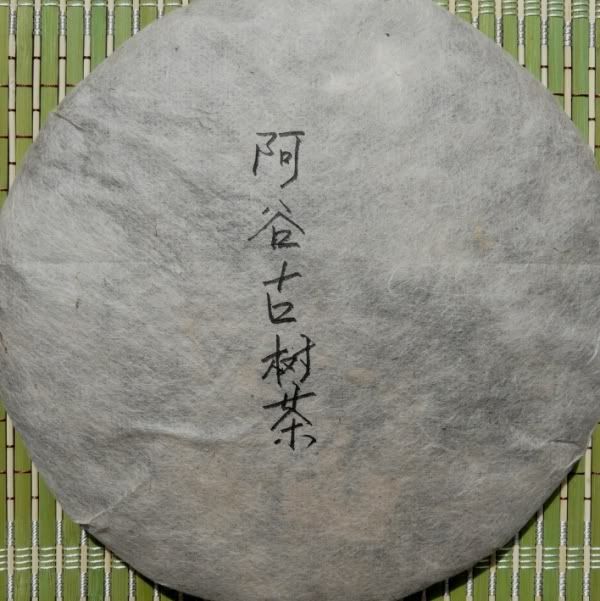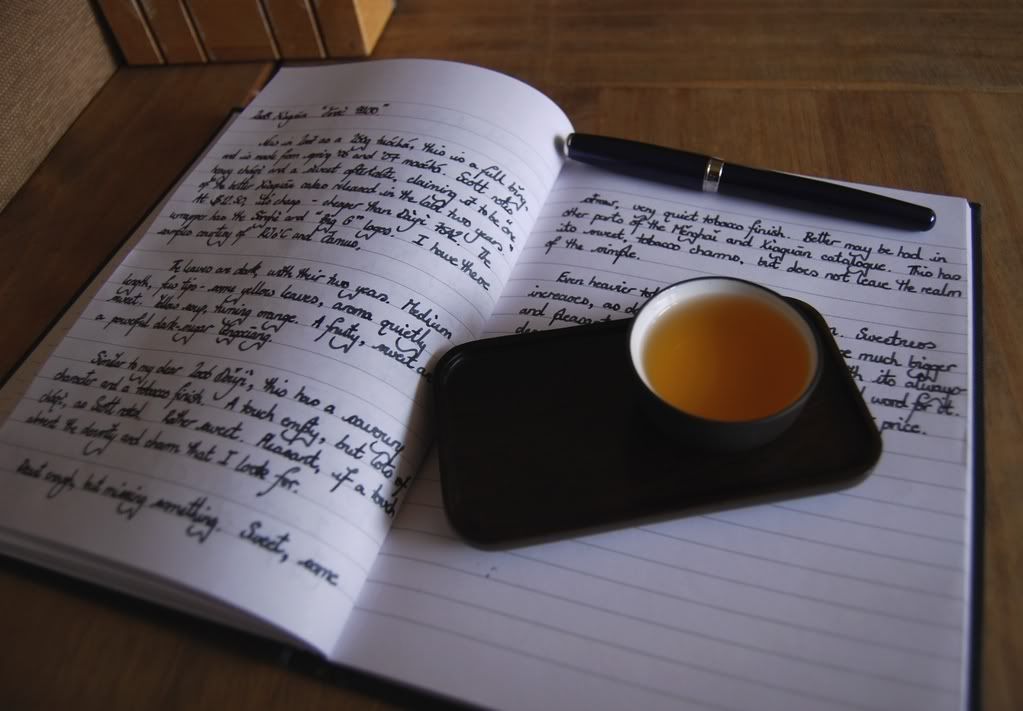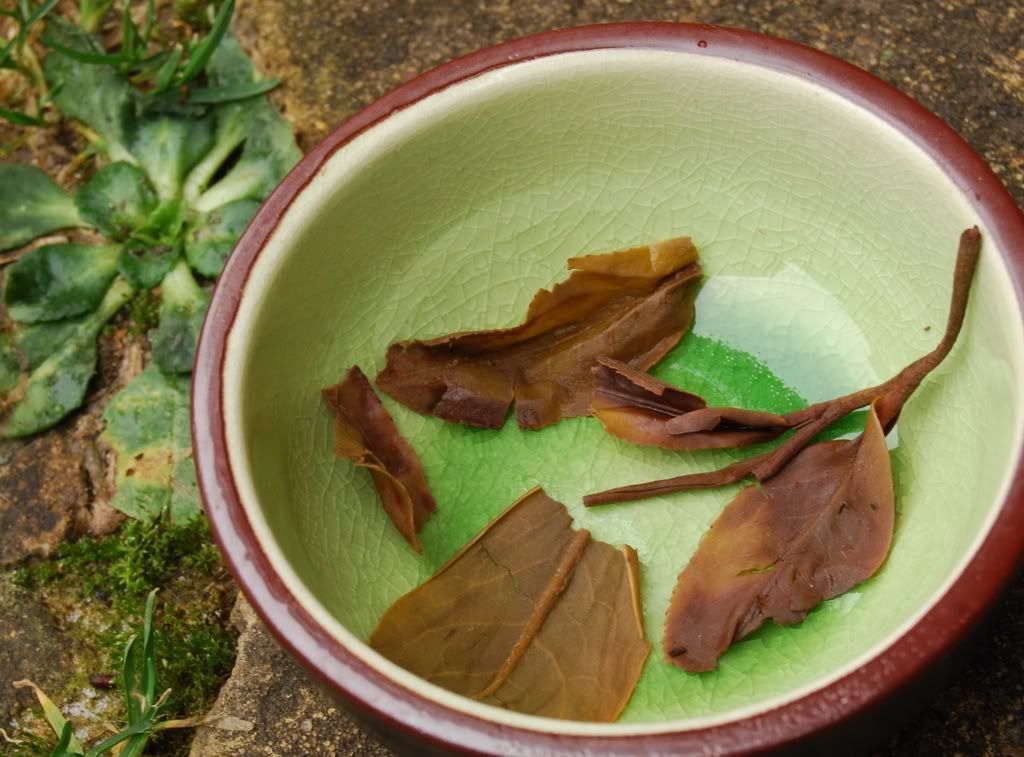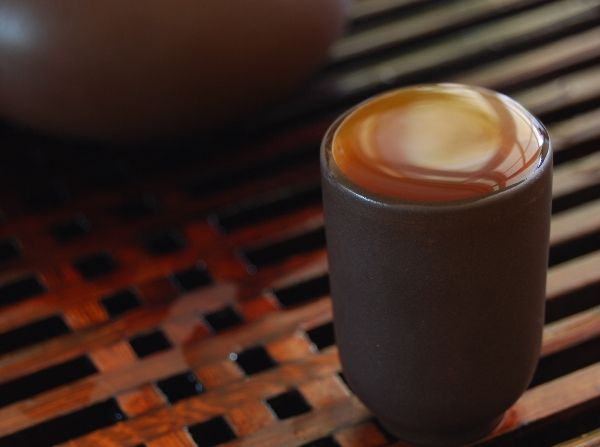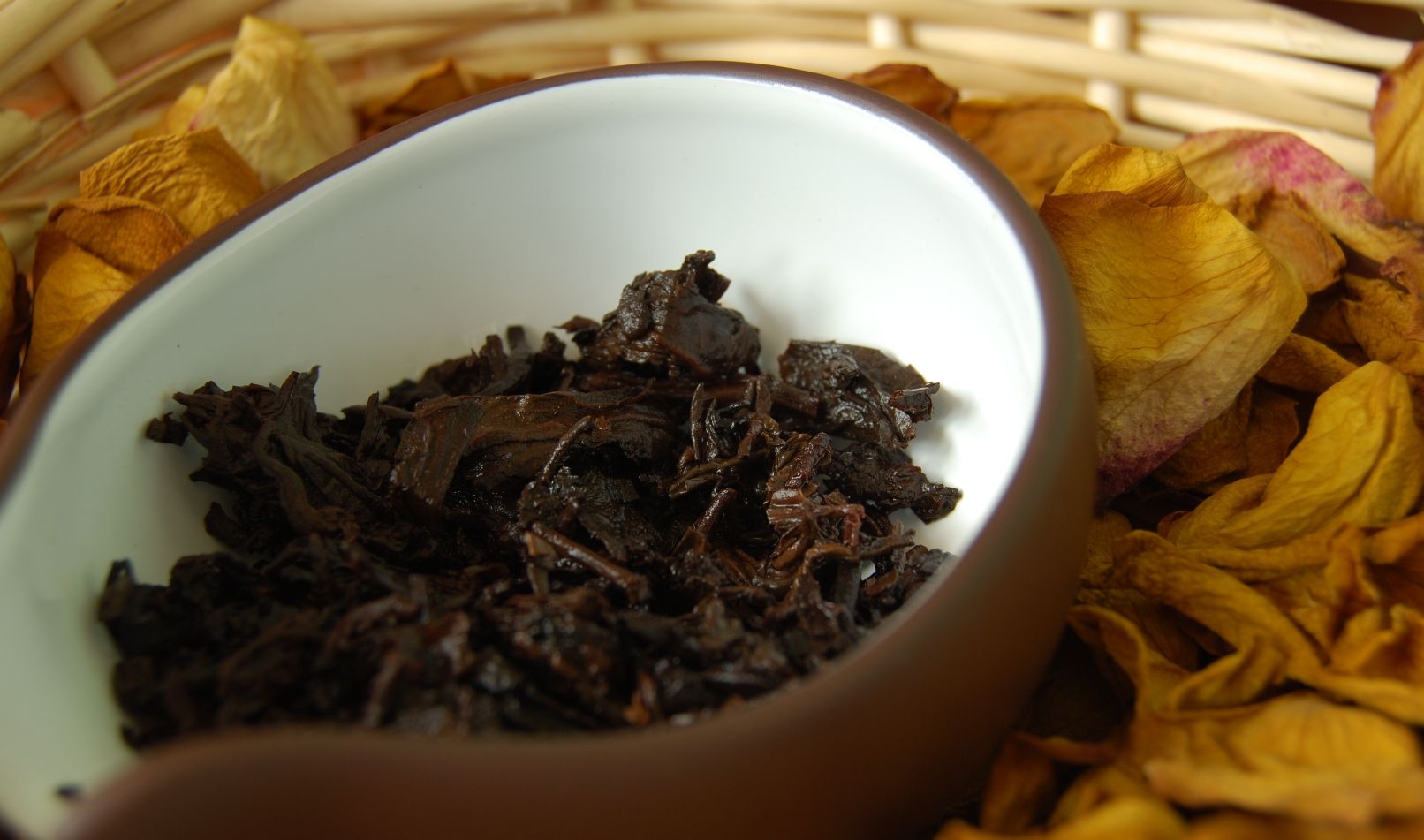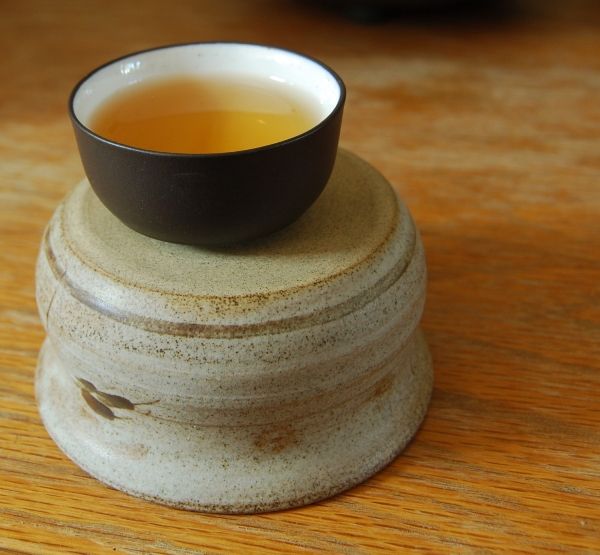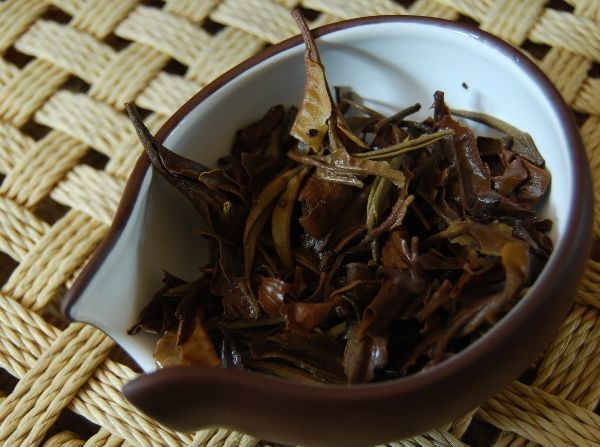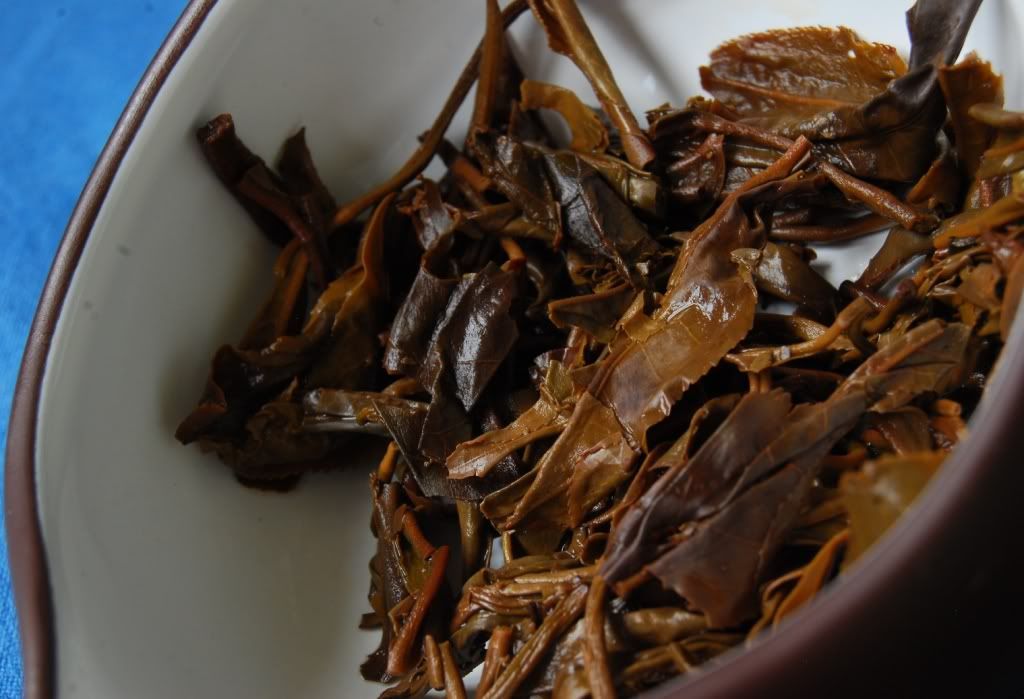I really love the release of the traditional Menghai recipes. I couldn't sleep properly one night, and found myself awake at 3 a.m., downstairs at the tea-table, ready to taste the 2009 version of this old favourite.
As always, this is a blend of maocha from the previous two years. This gives it a somewhat less green appearance than one might otherwise expect:
This being 7542, the leaves are medium-sized fragments from medium-sized leaves. You get a few tips in the blend, but mostly it's just middle-grade leaves. This isn't a bad thing, because they taste great.
Even under the artificial pre-dawn light, they look appealing. The smell is pungently sweet. The consistency of the blend from year to year is quite remarkable, given the variability of harvests.
The aroma is encouraging: it is crisp, sweet, powerful, long, and, perhaps happiest of all, familiar.
Familiarity is half of the charm of this old friend, along with its uncompromising brutality. After spending too much time drinking cakes that have been tweaked this way and that in order to seem more instantly appealing, I appreciate the down-to-earth honesty of 7542, which is a figurative kick in the groin as far as potency goes, but nonetheless enjoyable.
After drinking "dumbed down" tea for so long, it's really refreshing to have the 7542 shouting at you from the cup and calling you rude names.
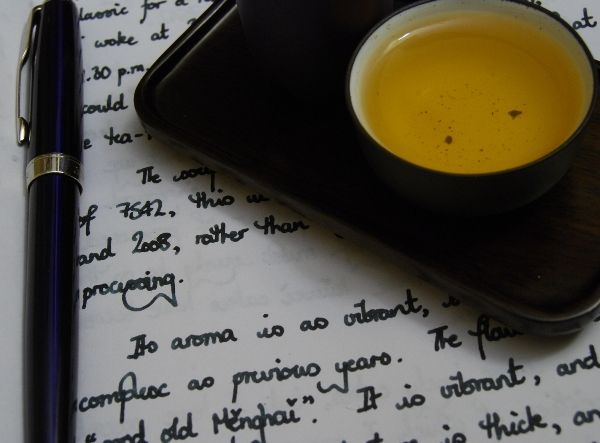
It's yellow with a hint of orange, courtesy of its one- and two-year-old blended maocha. This year's 7542 is definitely 7542, but it is the tinest bit sweeter, the tiniest bit higher, the tiniest bit less chunky than previous years.
As always, the kuwei [pleasant bitter-taste] always stays just on this side of enjoyable. They say "only mad dogs and Englishmen go out in the midday sun", and I'm sure something equivalent can be said of people that enjoy drinking 7542 while young - but I count myself among their grizzled, crazed number. I love the freshness, the challenge, all wrapped up in that delicious Menghai fresh-straw-and-sweet-mushroom character that they manage to recreate so successfully each year.
While having plenty of kuwei, there is no sewei [SIR-WAY, astringent-taste], even though I used tons of leaf. It has all of the complexity that one hopes for in 7542, with all manner of floral hints tucked away in the finish. Aged 7542 and 7532 (first son, and first daughter) are some of my favourites for just this reason, as they often seem to have more to offer than, for example, elegant little 8582 (second daughter).

I sit on a tiny little stool in the conservatory, lights dimmed. It's raining hard outside, and I sit in the peace and quiet of the 5 a.m. morning listening to the raindrops hammering against the windows, the wind howling through the treetops. No-one else is around to hear it, no cars are on the roads. Wind, rain, and me.

Another good year for 7542, for all is minor nuance of character. I often wonder why I bother chasing other low-end teas, when the inexpensive Menghai classic recipes thrill me so greatly.
Addendum
October, 2013
I have been drinking various Dayi cakes from 2008 and 2009 lately, stored in our house, and this is by far the most fragrant. It has a low, thick sweetness that lasts well in the wenxiangbei. Similarly, the flavour is dark, thick, and rich. Perhaps I am just in the "right mood" for tea - it is 4.30 a.m. and I cannot sleep.
Dayi tea is fascinating: it is obviously basic, and yet it is so obviously good after a few years of aging. I even like it raw. It is a work of considerable skill to make a decent tea, and one that is so stable and reliable, from such raw materials. This 7542-901 is deep and husky, and has the heaviness of Dayi aging. Sentence after sentence, the huigan endures in the throat. It has roughness, because it is taidicha [plantation tea], but it is so very enjoyable that we must forgive it such flaws. It is, after all, extraordinarily good value.

